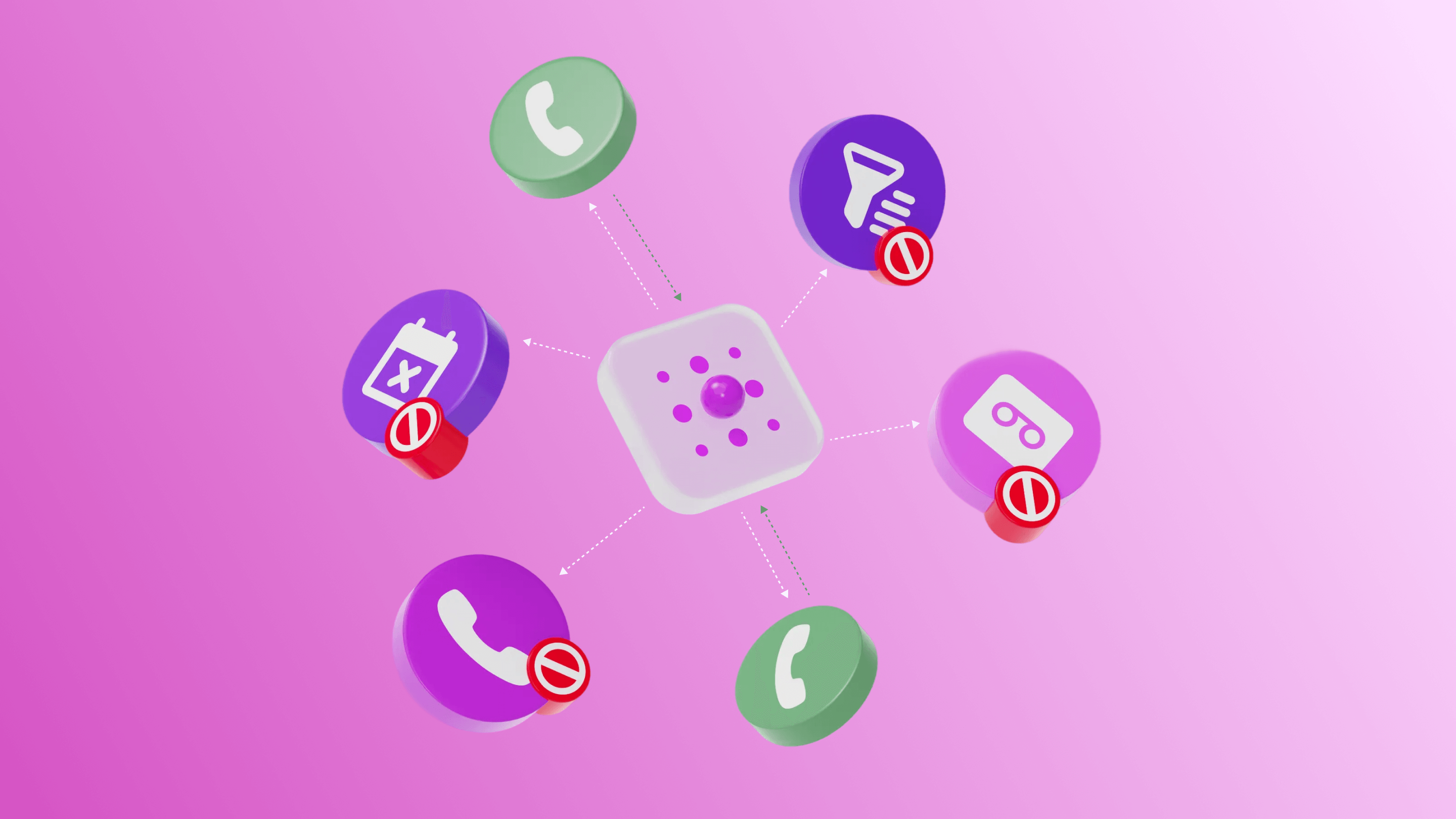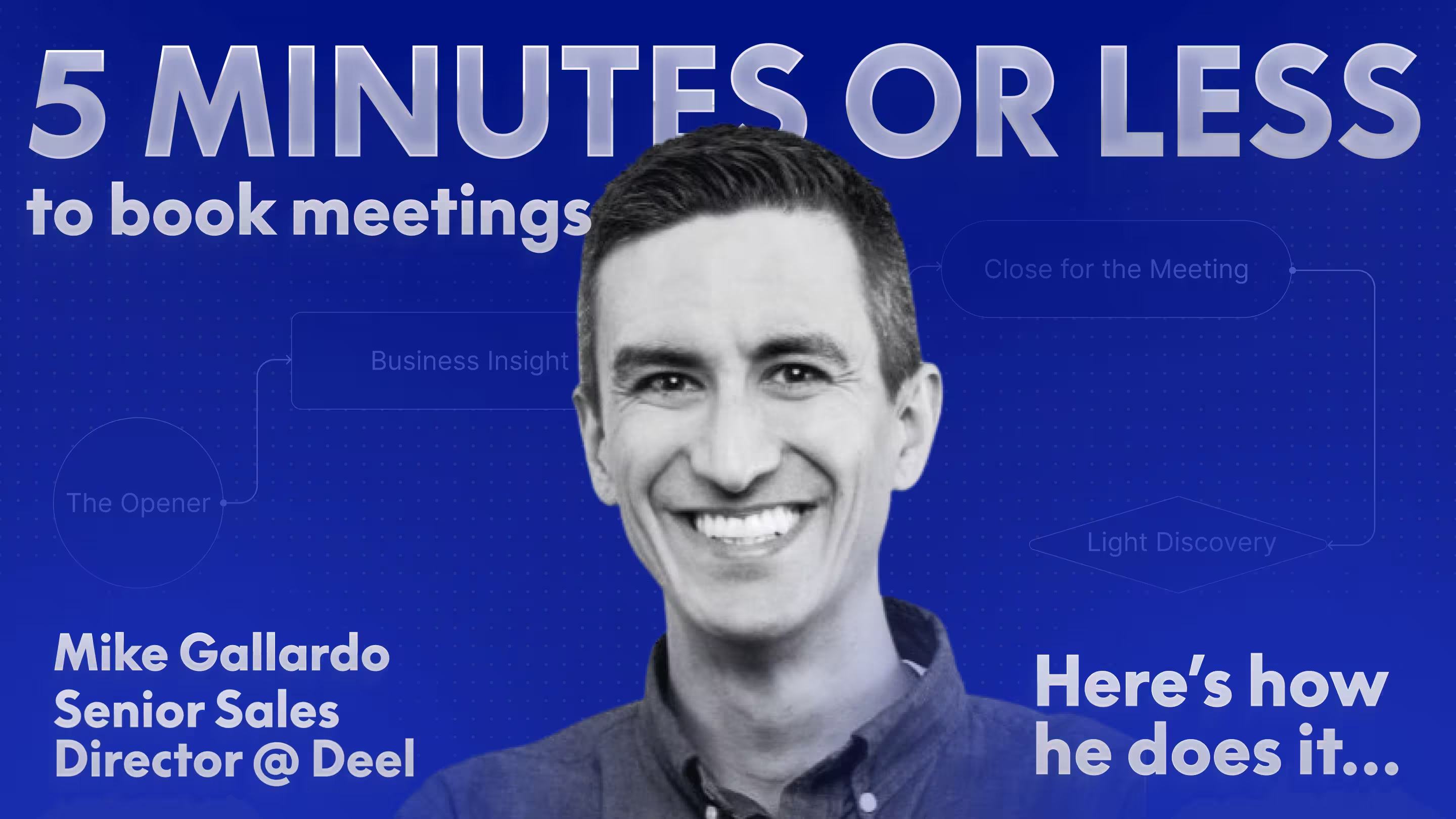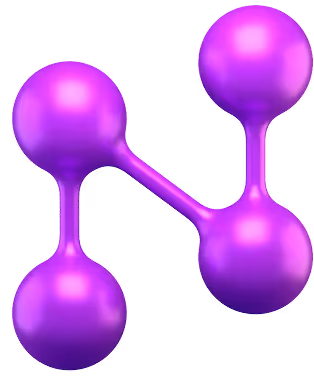The 2026 Sales Leaders Checklist: How to Choose Your Next Parallel Dialer for Peak Performance

The 2026 Sales Leaders Checklist: How to Choose Your Next Parallel Dialer for Peak Performance
As a sales leader, you’re not just managing a team; you're architecting a revenue engine. But the blueprints from a few years ago are already obsolete. The sales landscape of 2026 is defined by digital saturation, wary buyers, and a relentless demand for efficiency. Your team's success no longer hinges on just working harder—it depends entirely on working smarter. This is where the right technology becomes less of a tool and more of a strategic partner.
At the heart of any high-performing outbound sales team is its ability to connect with prospects. The dialer is the engine of this connection, and in 2026, the parallel dialer has emerged as the high-octane choice for teams focused on peak performance. Yet, choosing one isn't as simple as picking the option with the most features. It's about making a strategic decision that will define your team's capacity for growth, its efficiency, and its ability to thrive in a challenging market.

The Imperative for Peak Performance: Why 2026 Demands a Smarter Approach
Parallel dialers filter out unproductive calls, connecting reps exclusively to live prospects to maximize productive conversation time.
Economic headwinds and more discerning customers mean that every conversation counts. The pressure is on to maximize every resource, from your SDRs' time to your Marketing team's leads. Peak performance in 2026 isn’t about making the most calls; it’s about having the most productive conversations. Your technology stack must actively filter out the noise—the busy signals, the unanswered rings, the voicemails—so your reps can focus exclusively on engaging qualified prospects. A parallel dialer strategically filters out these unproductive calls, connecting sales reps only to live prospects and transforming their potential.
The Evolution of Outbound: Beyond Volume to Intelligent Engagement
The days of brute-force dialing are over. Successful outreach now requires a blend of speed, personalization, and intelligence. Modern sales teams need tools that enable them to contact a high call volume of leads quickly while still providing the agent with the necessary context to have a meaningful discussion. This evolution demands technology that can automate the tedious parts of the job without sacrificing the human element that closes deals. It’s a shift from a dial-and-pitch model to a connect-and-solve model.
Setting the Stage: What This Checklist Will Deliver for Sales Leaders
This article moves beyond basic feature comparisons to offer a strategic framework for evaluating and selecting the right parallel dialer. We will explore the critical criteria you must consider, from AI-powered intelligence and seamless CRM integration to compliance safeguards and the overall rep experience. Our goal is to empower you to conduct a thorough evaluation, helping you make a confident and intelligent investment that will accelerate your pipeline and support sustainable growth for your team's success.
Understanding the "Why": The Strategic Imperative for Parallel Dialing in 2026
Before diving into the checklist, it’s crucial to understand why a parallel dialer is such a powerful choice for modern sales teams. It's more than just a productivity hack; it's a strategic decision that directly impacts your ability to generate pipeline and outperform the competition.
What is a Parallel Dialer and How Does It Accelerate Your Sales Team?
A parallel dialer is an automated system that calls multiple phone numbers for a single seller simultaneously. The moment a live person answers, the dialer instantly connects that call to the waiting seller and drops the other unanswered lines. This simple but powerful mechanism dramatically reduces the idle time reps spend listening to ringtones and voicemails, multiplying the number of live conversations they can have in a day and fundamentally changing the pace of your outbound operations.
Differentiating Parallel Dialers: A Strategic Choice Over Power and Predictive Dialers
While often grouped with other automated dialers, the parallel dialer offers a distinct advantage. Power dialers call one number after another for a rep, offering more control but still including significant wait time. On the other hand, a predictive dialer uses algorithms to anticipate when an agent will become available and dials ahead. This can result in "abandoned calls" if no agent is free when a prospect answers, a practice that risks serious compliance violations and creates a poor customer experience. Parallel dialers provide the speed of multi-line dialing without the abandonment risk of predictive systems, making them a balanced and compliant choice for high-performance outreach.
The Core Advantage: Maximizing Live Conversations for SDRs and Sales Reps
The single greatest benefit of a parallel dialer is the drastic increase in live conversations. For Sales Development Representatives (SDRs) and sales reps whose primary role is prospecting and qualifying leads, this is a game-changer. More conversations mean more opportunities to qualify a lead, book a meeting, and fill the top of the sales pipeline. It transforms a rep’s day from one of tedious manual tasks to one of continuous, valuable customer engagement.
Connecting Dialer Choice to Pipeline Growth and Deal Velocity
The math is simple: a higher connect rate leads to more conversations, which leads to more qualified meetings, which in turn builds a healthier pipeline. By equipping your sales teams with a parallel dialer, you are directly investing in pipeline acceleration. It allows your team to engage with leads faster, qualify them more efficiently, and move them through the sales sequence at a greater velocity, ultimately shortening the entire sales cycle.
Defining "Peak Performance" for Your Sales Team in 2026
Choosing the right dialer begins with defining what success looks like. In 2026, peak performance is measured by outcomes, not just activity. It's a holistic view that balances speed, quality, efficiency, and sustainability.
Key Metrics for Leadership: Beyond Call Volume to Conversion Rates and Meeting Output
While a parallel dialer will undoubtedly increase your call volume, that’s a vanity metric. True performance is measured further down the funnel. The right dialer should provide analytics that help you track what matters: the connect rate, conversation-to-meeting conversion rates, and ultimately, meetings booked. Your focus should be on how the technology impacts these crucial business outcomes and drives real revenue.
Enhancing Rep Experience: Reducing Burnout While Boosting Productivity
A tool that burns out your reps is a liability, no matter how productive it seems. Peak performance involves creating an environment where sales reps can thrive. A well-designed parallel dialer significantly reduces the monotony of manual dialing and minimizes frustrating wait times. By serving up contextual information right when it's needed, it helps agents feel more engaged, confident, and successful, leading to higher morale, lower turnover, and more consistent results.
Strategic Impact: Lowering Customer Acquisition Cost (CAC) and Optimizing Cost Per Lead
Efficiency directly impacts your bottom line. By enabling each rep to engage with significantly more leads per hour, a parallel dialer lowers the labor cost associated with each conversation and qualified lead. This optimization of your sales process contributes to a lower overall Customer Acquisition Cost (CAC), a critical metric for any business focused on scalable and profitable growth.
The Role of Dialer Technology in Achieving Broader Sales Process Optimization
A parallel dialer shouldn't be a siloed tool. It should be a central part of your sales process optimization strategy. When integrated correctly, it ensures that leads are actioned immediately, feedback from calls is logged accurately in your CRM, and reps can seamlessly handle lead qualification. It becomes a catalyst for efficiency across the entire revenue organization, from initial outreach to closing the deal.
The 2026 Sales Leaders Checklist: Key Evaluation Criteria for Parallel Dialers
With a clear understanding of the strategic context, you can now use this checklist to evaluate potential parallel dialer vendors and make a decision that aligns with your long-term goals.
AI-Powered Intelligence and Automation: The Future of Sales Engagement
Your dialer must be more than just fast; it must be smart. Look for AI-powered features that go beyond basic answering machine detection. A modern platform should offer AI-powered predictive dialing capabilities, real-time call transcription, and call scoring to provide deeper insights for coaching. Can it automate post-call notes and summaries? An AI-powered dialer provides the insights and efficiencies that give your team a significant competitive edge.
Seamless CRM Integration and Tech Stack Compatibility
This is non-negotiable. The dialer must have a deep, native integration with your CRM (e.g., Salesforce, HubSpot). All call activity, notes, and dispositions should be logged automatically and accurately without forcing reps to switch between screens. Check for compatibility with your sales engagement platform (e.g., Outreach, Salesloft, Apollo) to ensure it fits perfectly within your reps' existing workflow, creating a frictionless experience.
Compliance and Risk Mitigation: The Non-Negotiables for 2026
In an increasingly regulated environment, compliance is paramount. Your chosen vendor must have robust features to help you adhere to regulations like the TCPA. This includes features like time zone-aware dialing, the ability to automatically screen calls against Do-Not-Call lists, and clear call recording consent management. Ask vendors specifically how their platform helps you manage and mitigate compliance risk.
Enhancing Rep Experience and Productivity
Evaluate the agent interface with a critical eye. Is it intuitive? Can reps easily see lead context, take notes, and disposition calls with minimal clicks? A clunky UI will create friction and undermine adoption. Features like a one-click Voicemail drop, automated email follow-ups, and easy access to call scripts can significantly enhance rep productivity and job satisfaction, making their workday more effective and less stressful.
Robust Analytics and Reporting for Strategic Insights
You can't manage what you can't measure. The dialer must provide a comprehensive analytics suite. Look for dashboards that track individual and team performance on key metrics like connect rate, calls-to-conversation ratio, and positive outcomes. The best platforms enable real-time coaching and allow you to tie dialing activity directly to pipeline and revenue, proving clear ROI on your investment.
Scalability and Future-Proofing for Long-Term Growth
Choose a partner that can grow with you. Does the vendor offer flexible plans that can scale as your team expands from a small group to a full-fledged sales floor? What is their product roadmap? A forward-thinking vendor will be investing in new technologies like autonomous voice agents and adapting to market changes, ensuring your investment remains valuable for years to come.
Navigating the Evolving Landscape: Addressing iOS 26 and Beyond
The world of telephony is not static. New challenges are constantly emerging that can impact your outbound strategy. A crucial part of your decision is choosing a vendor equipped to navigate this changing landscape and protect your ability to connect with prospects.
The Impact of iOS 26 Call Screening on Connect Rates and Outbound Strategy
Future operating systems, such as the anticipated iOS 26, are expected to feature more sophisticated on-device call screening. AI will likely transcribe a caller's opening line in real-time, allowing the user to read it before deciding to answer. If your rep’s opener is weak or they sound like a generic sales agent, the prospect will simply decline the call. This makes the first few seconds of a live conversation more critical than ever.
Proactive Solutions: How AI-Powered Detection Mitigates Spam Flags
Carriers are becoming increasingly aggressive in flagging numbers as "Spam Likely," which can devastate your connect rate. Your dialer vendor must have a proactive strategy to combat this. This plan should include intelligent number reputation management, automated number rotation, and AI-powered monitoring designed to detect and mitigate when numbers are being flagged.
Choosing a Vendor Committed to Carrier Network Best Practices and Innovation
Ask potential vendors detailed questions about their relationship with telephony carriers. Do they follow best practices to maintain the health of their number pools and ensure high call quality? How are they innovating to stay ahead of new carrier algorithms and blocking technologies? A vendor who is reactive to these challenges will leave your sales team struggling with poor performance.
Future-Proofing Your Dialer Against Evolving Telephony Challenges
Your goal is to select a technology partner, not just a software tool. A future-proof vendor is transparent about these industry challenges and demonstrates a clear, ongoing commitment to developing solutions. These solutions should protect your ability to connect with customers, ensuring your outreach efforts remain effective against changing technology and regulations.
Making the Final Decision: A Strategic Approach to Vendor Selection
Once you've narrowed down your options based on the technical and strategic criteria, the final step is to evaluate the vendor as a long-term partner for your business.
Beyond the Feature List: Evaluating Vendor Reputation and Customer Support
A great product with poor support can be a disaster. It's essential to investigate the vendor's reputation thoroughly. What is their customer support model? Do they offer dedicated account managers and strategic business reviews? Look for a partner who is invested in your success, not just in closing their own deal.
Leveraging Case Studies and Customer Feedback for Informed Choices
Don't just take the vendor's word for it. Ask for Case studies relevant to your industry and team size. Read third-party reviews on sites like G2 and Capterra. If possible, ask for reference calls with current customers. Hearing directly from other sales leaders about their experience with implementation, adoption, and results is an invaluable part of the decision-making process.
Conclusion
Choosing your next parallel dialer in 2026 is one of the most significant levers you can pull to drive peak performance for your sales team. This decision extends far beyond a simple productivity boost; it's a strategic investment in your pipeline, your reps' effectiveness, and your company's growth trajectory. By moving past a feature-for-feature comparison and adopting the strategic checklist outlined above, you can confidently select a solution that aligns with your specific needs.
Ultimately, a superior dialer must maximize high-quality live conversations and integrate seamlessly into your reps' workflow. It should provide actionable intelligence through AI and robust analytics, all while being backed by a vendor committed to navigating the future of sales engagement. By making an informed choice, you aren't just buying software; you are building a more resilient, efficient, and successful sales engine for the years ahead.





%20(1).png)

